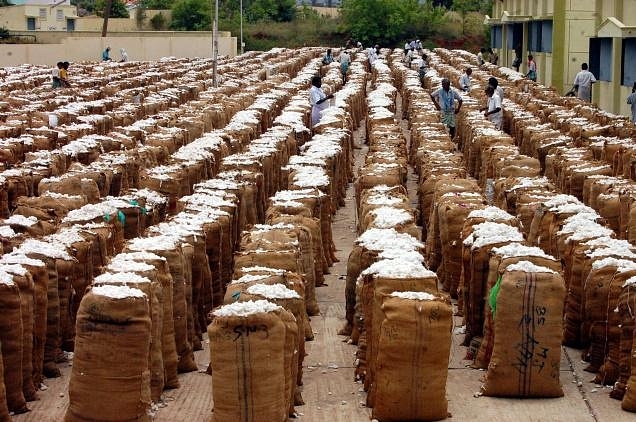
Cotton Export Ban and the UPA
A couple of days ago I had tweeted the following on the Government of India’s decision to ban cotton exports.
Can’t understand this outrage against cotton export! It is clear case of *Choice and Consequence* Happy Govt acted (1/2)
— sridhar krishna (@sridharkswamy) March 7, 2012
(2/2) even if decision eventually turns out wrong. Even best decision would affect some and benefit many
— sridhar krishna (@sridharkswamy) March 7, 2012
If we have to sum up the situation in a few words, it would fit into this story:
There was this man a typical Internet Yindoo. He was so close to God that he could ask for anything and God would immediately grant him that. He asked God to grant him a big Lottery prize so that he need not trouble Her repeatedly. But surprisingly this eluded him. In some time he died and met his Creator. He was furious and asked God why She denied him his wish for a big lottery win. The helpless Goddess had to tell him that try as She might She could hardly grant his wish if he had not bought a lottery ticket
To understand “economics in action” all one has to do is to substitute Government with God in this story. But there are some subtle differences:
God does not have to face election every five years.
God knows there is a limit to his power. (Don’t get me wrong there. I believe that Karma would control me rather than God). Government thinks it has unlimited power.
Coming to the cotton story, it is too complicated for anyone to take a stand on the issue. Especially with very little facts. As a typical city bred, I would hardly know the cotton growing cycle. Few articles that I located online suggests that procurement started late in November. This means that we are at the end of the procurement cycle. So a cotton export ban is a case of closing the stable doors after the horses have bolted.
My limited exposure to the cotton yarn market has taught me the simple lesson that it is too complicated for me to understand. It is not as simple as economics where you can fool people with template answers. In mid 90’s had a colleague who used to say that he had developed a template in Lotus (pre Excel days, makes you look ancient) to arrive at the cost of yarn given cost of raw Cotton, but still struggled to get a grip on market while the Chettiars would do it without help of any gadgets. In the next 15 years, most of the Chettiar run mills have gone out of business during various downturns.
But then I am acting like a typical Economist – As Reagan put it, by hedging my views – He said he would like to have an *One handed Economist* – Economists always like to hedge their positions by saying *On the other hand*.
That this Government is floundering is evident once more hardly few days from banning the export it is already talking of removing the ban. So it would be foolish for me take a stand at this point. But this article from Nasdaq gives an insight into what is happening in the world market:
China has been consistently buying up cotton both domestically and from foreign sources towards its buffer stock, and has now accumulated millions of bales in reserve. A report in the Financial Times citing the U.S. Department of Agriculture say China currently hold reserves estimated at around 15 percent of the global requirement.
The U.S. Department of Agriculture indicates China had procured about 11.4 million bales of cotton domestically and 5 million bales from foreign producers toward the reserve.
In the meantime, textile mills around the world have had to pay much higher prices for the fiber with demand outstripping supply.
Surely, while farmers get a good price for cotton, it may not augur well for the textile industry and with China stockpiling cotton, has not helped matters.
As a cynic I take all stories with a pinch of salt, so would advise you to do the same.
The textile ministry sees the flurry of activity in cotton exports as hoarding abroad. Shipments of cotton fiber from India jumped to approximately 9.5 million bales, which is well above the government estimates of 8.4 million bales. As a result, domestic cotton stockpiles have also dropped to 3.6 million bales for the 2012-13, much lower than the minimum of 8 million bales recommended by a ministerial group.
While cotton trade groups and several political parties support the grower’s demand for lifting the ban, industry groups such as the Confederation of Indian Textile Industry has supported the ban.
Nonetheless, the move by India to ban cotton fiber could be justified in light of the Chinese reserve stock program for its own industry, notwithstanding its impact elsewhere in the world. It is natural that cotton farmers feel slighted by the ban and the government should initiate significant plans to alleviate their concerns. It should chalk up some program to support cotton farmers and ensure steady remunerative prices for their produce.
It only pains me to note that the Government is not even able to hold on to its stand even for a few days. Having banned cotton exports on March 5th it is talking of revoking the ban on March 8th.